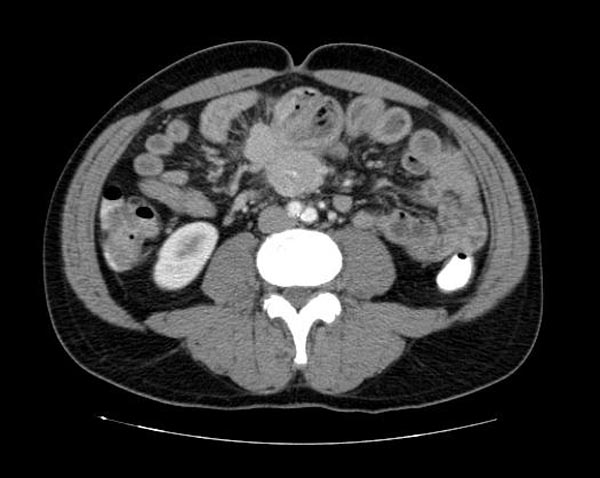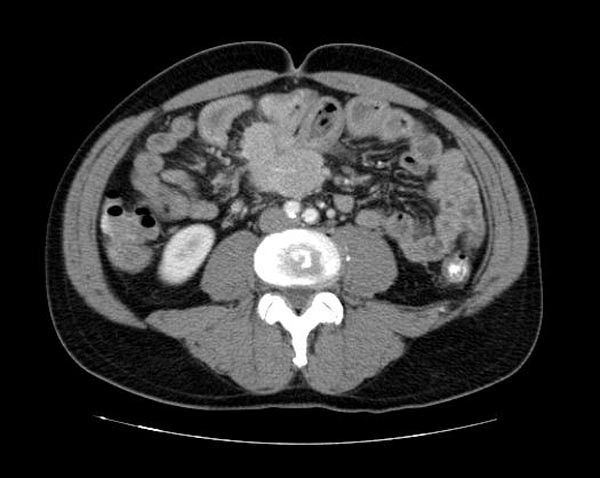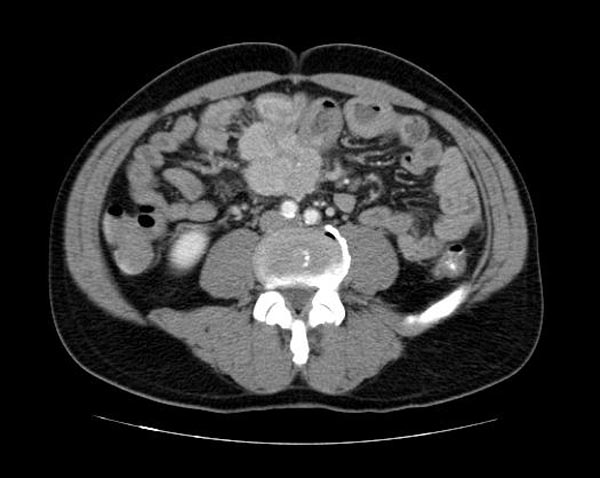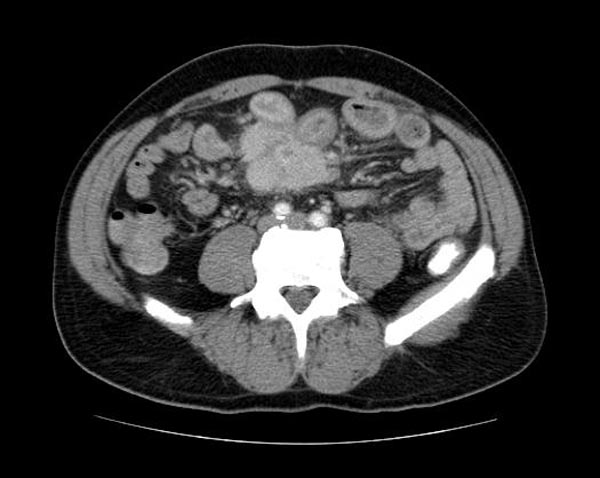Carcinoid syndrome CT: Difference between revisions
Jump to navigation
Jump to search
No edit summary |
|||
| Line 12: | Line 12: | ||
*Many have lobulated margin with an average Hounsfield value on post contrast imaging at around 50. | *Many have lobulated margin with an average Hounsfield value on post contrast imaging at around 50. | ||
*Imaging features are often non specific and tissue diagnosis is essential in determining diagnosis. | *Imaging features are often non specific and tissue diagnosis is essential in determining diagnosis. | ||
===Bronchial Carcinoid Tumour HRCT Chest=== | |||
Central lesions are usually seen as: | |||
*A single hilar or perihilar mass which is usually well-defined, round or ovoid | |||
*Can be of any size but typically range ~2-5 cm | |||
*There is often marked homogeneous contrast enhancement due to high vascularity | |||
*Calcification (usually eccentric) can occur but is not a common feature | |||
<gallery> | <gallery> | ||
Image: | Image: | ||
Revision as of 20:41, 22 September 2015
|
Carcinoid syndrome Microchapters |
|
Diagnosis |
|---|
|
Treatment |
|
Case Studies |
|
Carcinoid syndrome CT On the Web |
|
American Roentgen Ray Society Images of Carcinoid syndrome CT |
Editor-In-Chief: C. Michael Gibson, M.S., M.D. [1]Associate Editor(s)-in-Chief: Parminder Dhingra, M.D. [2]
Overview
CT
Peripheral Pulmonary Carcinoid Tumour HRCT Chest[1]
- Most are discovered as an incidental rounded solitary pulmonary nodule.
- The size at diagnosis can vary but usually reported to be range around 10-30mm.
- Many have lobulated margin with an average Hounsfield value on post contrast imaging at around 50.
- Imaging features are often non specific and tissue diagnosis is essential in determining diagnosis.
Bronchial Carcinoid Tumour HRCT Chest
Central lesions are usually seen as:
- A single hilar or perihilar mass which is usually well-defined, round or ovoid
- Can be of any size but typically range ~2-5 cm
- There is often marked homogeneous contrast enhancement due to high vascularity
- Calcification (usually eccentric) can occur but is not a common feature
References
- ↑ Peripheral pulmonary carcinoid tumour . Radiopaedia. http://radiopaedia.org/articles/peripheral-pulmonary-carcinoid-tumour Accessed on September 22, 2015



